Oakland Post
“Where there is no vision, the people perish...” Proverbs 29:18 postnewsgroup.com 60th
Weekly Edition. January 25 - 31, 2023
Community Defends the Chief
NAACP, Clergy, intergenerational and interracial voices demand the reinstatement of Police Chief LeRonne Armstrong by Mayor Sheng Thao. The enthusiastic display backing Oakland’s top cop is historic for a city that has suffered decades-long mistreatment from many of its peacekeepers. The community continues to call for reform of the police department, but they want Armstrong to lead that direction.
Popular Chief LeRonne Armstrong Placed on Administrative Leave During Investigation of Police Misconduct
“I did nothing wrong. I violated no policies,” said Armstrong, speaking at a press conference
By Ken EpsteinRefusing to accept administrative leave during a police misconduct investigation, OPD Chief LeRonne Armstrong fired back with a press conference of his own this week, organized by a high-profile corporate public relations and communications firm.
“I should be the chief of police and remain in my position,” he said. “I did nothing wrong. I violated no policies.”
The case involves a highly paid police sergeant who was involved in a hit-and-run automobile accident in San Francisco and is accused of later discharging a gun in an OPD freight elevator and disposing of the shell casings by throwing them off the Bay Bridge.
cades.
In his remarks, Armstrong defended OPD’s internal affairs department and fellow officers who were criticized in an independent report that found “systemic deficiencies” in the police department.
“This to me, clearly, is a lastditch effort to destroy the credibility of me…and to make the community believe that Oakland police is involved in some shady business,” he said.
He blasted Warshaw’s “ulterior motives,” accusing him and his team of seeking a reason to continue to be paid over $1 million a year to oversee the department, which was potentially set to exit from federal oversight at the end of May.
By Carla Thomas and Post Staff“Chief LeRonne Armstrong has done nothing wrong,” was the resounding statement of the afternoon at the Alameda County Rene C. Davidson Courthouse on 1225 Fallon Street near Lake Merritt on Tuesday, Jan. 24.

Hundreds of civic, religious, and community leaders joined in mass support convening on the steps of the courthouse at a press conference hosted by the Oakland NAACP.
Chief Armstrong. Moreover, we call on Mayor Sheng Thao and the City Attorney, Barbara Parker to urge the judge to investigate the Federal Monitor Robert Warshaw.”
Last week, Armstrong was placed on administrative leave for not applying the appropriate punishment to an officer who had not fully reported his own squad car accident in San Francisco and fired a gun in the elevator of the OPD headquarters. Under federal oversight for two decades, the OPD is monitored on a quarterly basis.
on the federal oversight of OPD, Gallo said he has fought to get Oakland released from the Negotiated Settlement Agreement. “We have paid $20 million, at a rate of $1 million a year for a monitor to evaluate every three months. I met with the National Police Officers Association in Washington, D.C. and they said to me: ‘Mr. Gallo, Warshaw needs to be fired!’” Gallo also pointed out that Warshaw had been previously fired as a monitor in the city of Detroit.
Mayor Sheng Thao placed Armstrong on administrative leave with pay while his role in an officer misconduct cover-up scandal is investigated by internal affairs.
At a press conference Monday at the office of PR consultant Sam Singer’s office in Emeryville, Armstrong did not blame Mayor Sheng Thao for placing him on leave but instead denounced federal monitor, Robert Warshaw, who oversees the police department and evaluates its reform efforts as a representative for the federal court that has overseen OPD for two de-
“It’s hard to say a mayor who’s been in the seat for just a couple of weeks would be able to push back against a monitor at this point,” Armstrong said, adding that some city officials might be “intimidated” by Warshaw’s team.
City Attorney Barbara Parker said in a statement that her office agreed that the recent report on
Continued on page 12
Uproar in Oakland After OPD Chief Armstrong Placed on Leave

the Oakland African American Chamber of Commerce, Councilmember Noel Gallo, and other Oakland leaders.
“Chief LeRonne Armstrong did nothing wrong,” said the NAACP’s media release.
“Our police chief has done nothing wrong,” said Oakland NAACP president, Cynthia Adams. This was echoed by Cathy Adams, president of the Oakland African American Chamber of Commerce. Oakland Mayor Sheng Thao placed Chief Armstrong on paid administrative leave while he is being investigated for lax discipline in two officer cases. Both representatives are requesting that the Oakland mayor “walk back the decision, reinstate Chief Armstrong so he can get back to the business of meeting the public safety of his constituents.”
City Councilmember Noel Gallo (D-5) who attended Armstrong’s press conference in Emeryville on Monday said, “He should have never had to go

Asian community leader Carl Chan, representing the Oakland Chinatown Chamber of Commerce, said that immediately after Armstrong became chief, Armstrong reached out to support the Asian community and combat the surge of violent assaults on Asian people by providing as an Asian liaison officer.


“He has been bridging the gap between the OPD and the entire community,” said Chan. “He has had our back, but today it is time for us to say, ‘We have your back!’”
By Ken EpsteinMany organizations and individuals are weighing in after Mayor Sheng Thao’s decision last week to place OPD Chief LeRonne Armstrong on paid administrative leave while an investigation proceeds into a newly revealed police misconduct scandal and allega-

tions
Calling for Armstrong to be immediately reinstated, the Oakland NAACP held a press conference Tuesday at the Renee C. Davidson Courthouse in downtown Oakland, joined by 100 Black Men, the Oakland Chinatown Chamber of Commerce, Pastors of Oakland,


“After reviewing the publicly disclosed information, the Oakland NAACP strongly requests that Mayor Sheng Thao allow due process and reinstate Chief Armstrong immediately. We also call on Mayor Sheng Thao and City Attorney Barbara Parker to urge the judge to investigate Federal Monitor Warshaw,” the media release said.
Civil rights attorney John Burris, who has worked with both Armstrong and Warshaw, has been

Continued on page 12
The NAACP representative stated, “We know that Chief LeRonne Armstrong has done nothing wrong and we strongly urge Mayor Sheng Thao to allow due process and immediately reinstate

through this. He is fundamentally responsible for the safety of his people. He grew up here. We have great representation in Fruitvale because of him and I applaud his leadership.” While shedding light
Pastor Phyllis Scott, President of Pastors of Oakland told the Post, “This city is blessed to have Chief LeRonne Armstrong as our friend. I am calling on the mayor to restore him as our chief.”
“When the homicides last year reached 134 homicides and our communities lived in fear…he empowered communities. He got involved in community prayer vigils. He met with all communities, listening to their concerns and putting solutions in place to the individual needs of those communities. That’s why you see such a good representation of pastors at this NAACP rally.”
Pastor Scott said the chief invested the time of his officers.
“When officers spoke at community events and attended church
COMMENTARY: Milestones Show Us Where We’ve Come From, Where We Need to Go
The Big Six: Organizing the Struggle for Freedom
By Ben JealousTwo things happened last week — one public, the other personal — that made me reflect on how far we’ve come as a nation, how we got here, and what it will take to keep that journey moving forward.
Maryland, my home state, inaugurated its first Black governor, Wes Moore. It’s a description I thought might go to me four years ago when I became only the third person and the first African American to win 1 million votes in a statewide race. Unfortunately, my incumbent opponent was one of the other two.
Attending the inauguration made me think about how we’ve gotten here — more slowly than anyone who truly believes in our American ideals would consider right, but making steady progress all along the way. My vote total helped Wes, just as President Obama’s victory in 2012 eased my way. I think back to being a youth leader in my California county for Rev. Jesse Jackson’s 1988 presidential bid.
While we can bemoan the pace for good reason, we shouldn’t overlook that change has come. That long arc of the moral universe remains. Even when we fall short of something like an electoral victory, we make progress.
The question remains the eternal one when we see injustice, inequity and threats like climate change that are unquestionably existential. How do we pick up the pace?
On the same day, I celebrated
my 50th birthday. That means I’ve been organizing and advocating for change for more than half my life.
I’m lucky in many respects. Thirty years ago, celebrating someone else’s 21st birthday, I remember standing with other young Black men somberly pouring out our drinks in memory of our friends who had been killed or imprisoned before we got to college.
I’m luckier still that I’ve had people throughout my life — starting with my parents — who have helped me find my commitment and learn ways to put it into effective practice.
People like Alvin Chambliss, the North Mississippi Rural Legal Services lawyer, who asked me to lead protests against closing two historically Black universities to turn them into prisons. People like Norman Hill, a protege of A. Philip Randolph and Bayard Rustin, and union leaders Richard Womack and Bill Lucy who trained me (along with Stacey Abrams and Derrick Johnson) at an AFL-CIO summer institute for Black student organizers. People like Bishop Desmond Tutu and Colin Powell.
I remain deeply committed to passing forward all that knowledge and insight, so hard won by folks who preceded me in ways that paved my road. For me that starts with listening to young leaders and organizers both to understand their perspectives as well as to give them space to air what they are compelled to get out. For me, change starts with listening.
What I hope to impart are the big ideas that were passed along to
me, like Gen. Powell’s lesson that finding the one common cause we can share can be much more powerful than a hundred things that we may disagree about. Finally, I want to charge them to use their own gifts, talents and knowledge to make the progress we still need. They will know how best to reach their peers and those who come after them. A quinquagenarian like me will never be able to use the tools of their generation to their fullest effect. What I hope to do is inspire and applaud.
That’s an optimistic view, I know. One that I get genetically perhaps. Just before my grandmother died, she took a call from Sen. Barbara Mikulski, who had been a graduate student in social work decades before when my grandmother was creating Child Protective Services in Baltimore. It was that long arc in view. It was my grandmother who gave me the perspective that still guides me. “Baby, it’s true. Pessimists are right more often, but optimists win more often,” she told me once. “In this life, you have to decide what’s more important to you. As for me, I’ll take winning.”
Ben Jealous is incoming executive director of the Sierra Club, America’s largest and most influential grassroots environmental organization; former national president of the NAACP; and professor of practice at the University of Pennsylvania. His new book “Never Forget Our People Were Always Free” was just published.

1111 Broadway, Suite 800, Oakland, CA 94607 (510) 208-7400 • www.alamedactc.org
By Tamara ShilohBy 1963, racial tensions across America surged to dangerous heights, especially in areas promoting segregation, hostility, and police brutality. Protests and violence had become challenging in Birmingham. Its local jails were full, sparking outrage throughout the city. Media outlets were bringing national attention to the injustices served in Black communities.
In the meantime, interest in organizing a march began to swell.
On July 2, 1963, six leaders representing various national civil rights organizations met in New York City, making public their plans to organize a march demanding jobs and freedom. The March on Washington for Jobs and Freedom, also called the March on Washington or The Great March on Washington, took place in Washington, D.C., on Aug. 28, 1963. Appointed as march director was Asa Philip Randolph (1889–1979).
Randolph began his career as an activist in 1917 when he became president of the National Brotherhood of Workers of America. He was named as its president in 1925, and by 1937, Black workers were receiving better pay, benefits, and working conditions. His greatest success as a labor organizer was with the Brotherhood of Sleeping Car Porters.
Martin Luther King Jr. (1929–
Request for Proposals (RFP) for Federal Legislative and Policy Advocacy Services (RFP No. R23-0009)
The Alameda County Transportation Commission (Alameda CTC) is seeking proposals for a contract to commence services in July, 2023, or as indicated in the RFP and/or appropriate addenda.

Key Dates:
- Proposal due date: February 22, 2023 at 3:00 p.m. PT
Proposals are subject to Alameda CTC’s Local Business Contract Equity Program. The Program goals for professional services are 70% for Local Business Enterprise (LBE) and 30% for Small LBE. For Program requirements and forms, visit Alameda CTC’s website. Any contract resulting from this RFP will be awarded without discrimination based on race, color, religion, sex, sexual orientation or national origin.
All RFP documents are available at www.alamedactc.org/contracting-opportunities and may also be obtained by contacting Alastair Powell at apowell@alamedactc.org. All questions regarding this RFP must be submitted in writing to apowell@alamedactc.org, no later than 3:00 p.m. PT on February 3, 2023.
Submittals must be made in accordance with the instructions in the RFP. Any contract awarded must be in compliance with the local, state, and/or federal requirements.
1968) served as the pastor of Dexter Avenue Baptist Church in Montgomery, Ala. His leadership during the 1955 Montgomery Bus Boycott after the arrest of Rosa Parks, which lasted a little more than a year, catapulted him into the national spotlight. Before his assassination in 1968, he was the recipient of the 1964 Nobel Peace Prize.
In 1961, while working for the NAACP, James Farmer Jr. (1920–1999) organized Freedom Rides throughout the South. The goal was to use the media to make the world aware of the violence Blacks in America endured.
John Lewis (1940–2020) was a social activist long before his career as U.S. representative for the 5th Congressional District in Georgia began. He became involved in civil rights activism during his college years (1960s). He was later appointed as the Student Nonviolent Coordinating Committee chair, and by 1963, was known as one of the “Big Six.”
A social worker by trade, Whitney Young Jr. (1921–1971) rose to power during the civil rights movement because of his commitment to bringing employment discrimination to a halt. Working with the National Urban League and as part of the Great Migration, he assisted Blacks in securing employment, housing, and other resources once they’d reached northern cities.
Roy Wilkins (1901–1981) believed that civil rights could be achieved by changing laws, using his stature to testify during Congressional hearings. He started out as a journalist for Black newspapers, but his work as a civil rights activist (1931–1977) is what added his name to the history books. Mid-career (1950s), he worked with Randolph and Arnold Johnson to establish the Leadership Conference on Civil Rights.
Learn more about the power of social justice in this in-depth exploration of five marches, protests, and boycotts of the Civil Rights Era in Barbara Diggs’ “Boycotts, Strikes, and Marches: Protests of the Civil Rights Era.”
Source: https://americanhistory.si.edu/changing-americaemancipation-proclamation1863-and-march-washington-1963/1963/leaders-march https://en.wikipedia.org/wiki/ Big_Six_(activists) https://blackthen.com/the-bigsix-key-leaders-of-the-march-onwashington-for-jobs-and-freedom/
Image: https://www.thoughtco.com/men-of-the-civil-rightsmovement-45371
The “Big Six” Civil Rights Leaders (L to R) John Lewis, Whitney Young Jr., A. Philip Randolph, Martin Luther King, Jr., James Farmer Jr., and Roy Wilkins. Hulton Archive / Getty Images

Jan. 31: Deadline for Signing Up for Health Insurance in California
Edward Henderson, California Black MediaThe open enrollment period for Californians to secure health insurance plans ends on Jan. 31.
Depending on your situation, there are multiple options to explore when searching for a plan that is best for you through Covered California.
Covered California is the state’s health exchange marketplace created to get Californians quality health insurance through brand name plans like Kaiser Permanente, BlueCross BlueShield, Cigna and many others.
One option is to buy a plan through Covered California. If you qualify for a tax credit to help offset your premiums, you may want to buy a plan through the marketplace. Qualifying usually depends on your income and household size. Your total household in-
come must be between 128% and 400% of the Federal Poverty Level (FPL).
Another option is to renew or change your current plan. During the open enrollment period, you can renew your existing plan. You won’t have to do anything if you want to keep what you have.

But if your current plan is changing — for instance, your Primary Care Physician (PCP) is leaving the network, or your drugs aren’t in the list of covered medications — then you may want to switch to a plan that best suits your current needs. If you need to change policies, the open enrollment period is the best time.
You can also enroll in MediCal. If your income is below 128% of the FPL, you qualify for MediCal, which is Medicaid for Californians.
Continued on page 11
Report: Cops Search Black California Teens Six Times More Than White Peers
there is an indication that a higher rate of those stopped who were perceived as Black were not actually engaged in unlawful activity.
In addition, Black children and adolescents (10 to 14 and 15 to 17 years old) were detained curbside or in a patrol car, searched, or handcuffed during a higher percentage of stops than any other combination of perceived race or ethnicity and age groups.
Call to Protect Geoffrey’s Inner Circle from Threatened High-Rise Development
 By Ken Epstein
By Ken Epstein
Antonio Ray Harvey, California Black Media
The California Racial and Identity Profiling Advisory Board (RIPA Board) released its annual report on policing in December. It revealed that people “perceived as Black were searched at 2.2 times the rate of people” appearing as white.
Additionally, law enforcement officers in the state searched a total of 6,622 more people perceived as Black than those perceived as White, the report states. Also of note, those perceived to be Black adolescents between 15 to 17 years old were searched nearly six times the rate of those perceived as white.
“In addition to providing a detailed analysis of the policing activities of 58 law enforcement agencies, this year’s report provides much-needed context on the negative physical, emotional, and mental health consequences expe-
rienced by students and the broader communities that are most often the subject of those activities,” said RIPA board member Melanie Ochoa, Co-Chair of the Board and Director of Police Practices at the American Civil Liberties Union of Southern California.
RIPA Board is a diverse group of 19 members representing the public, law enforcement, and educators. It was formed in 2016 when Assembly Bill (AB) 953, the “Racial and Identity Profiling Act,” was passed. The bill was authored by Shirley Weber, California Secretary of State, when she was an Assemblymember representing the 79th District in the greater San Diego area. The board’s charge is to “eliminate racial and identity profiling and improve diversity and racial and identity sensitivity in law enforcement,” according to language included in AB 953.
“California remains at the fore-
front of the nation in examining police stop data,” said California Attorney General Rob Bonta. “Over the last several years, we’ve collected and analyzed information on nearly 12 million police encounters in our state.”

The current report, sheds light on a study of millions of vehicular and pedestrian stops conducted from Jan. 1, 2021, to Dec. 31, 2021, by 58 law enforcement agencies in California — a notable expansion from the 18 participating agencies documented in the previous report released by RIPA last July.
At the conclusion of a stop, officers are required to report the outcome such as no action taken, warning or citation given, or arrest. For individuals perceived as Black, the 2023 report stated, officers reported “no action taken” approximately 2.2 times as often as they did for individuals viewed as white. The report concluded that
The report also details that law enforcement officers used force against people perceived as Black at 2.2 times the rate of individuals perceived as white. For those perceived as Latino, officers used force against them at 1.3 times the rate of individuals perceived as white.
Fifty-eight agencies reported over 3.1 million stops during the data collection 12-month study, with the California Highway Patrol (CHP) conducting the most stops of any single agency (54.9%). In addition, individuals perceived to be Hispanic/Latinos (42.4%), white (30.7%), or Black (15.0%) comprised the majority of stopped individuals.
“Coupled with a strong set of evidence-based recommendations to the Legislature, local jurisdictions, and policing agencies, such as an end to pretext stops and consent searches, our hope is that this year’s report will continue to push California towards building communities that are safer for all,” Ochoa stated.
The Peace Officers Research Association of California (PO-
Continued on page 10
Geoffrey’s Inner Circle, a downtown Oakland Cultural Center that has featured live jazz and served music lovers and the Black community for decades, is now under threat from a proposed real estate development that could undermine the stability and future of the facility.
Geoffrey’s, located at 410 14th St., is part of the city’s Black Arts Movement and Business District which was formed in 2016 by resolution of the Oakland City Council to protect Black-owned businesses and enhance a downtown district that would encourage the historic African American legacy and culture of Oakland.
Now, the Oakland Planning Commission is considering a high-rise building proposed by out-of-town developers next to Geoffrey’s, which would jeopardize both the survival of the venue and the Black business district as a whole.
In addition to running a business that has been a crucial institution in the local community and the regional arts scene, Geoffrey Pete, founder, has utilized his business to offer meals for thousands of unsheltered individuals and hosted countless community events.
CITY OF OAKLAND REQUEST FOR PROPOSAL (RFP) FOR DIRECT COMMUNITY GRANTS

The following petition is being circulated in defense of Geoffrey’s and the Black Arts district (To add your name to the petition, email info@geoffreyslive.com):
“The African-American community in Oakland has been seriously damaged by developers and public officials who are willing and sometimes eager to see African-Americans disappear from the city. Black people comprised 47% of the population in 1980; now they make up only 20% of said population. In response to this crisis the 14th Street Corridor from Oak to the 880 Frontage Road was established as the Black Arts Movement and Business District by the City Council on Jan. 7, 2016, in Resolution 85958.
Tidewater, an out-of-town developer, is proposing to build a high-rise building at 1431 Franklin, which will damage the Black business district and the businesses in the area including the iconic business of Geoffrey’s Inner Circle at 410 – 14th St.
We demand that the Planning Commission and the City Council reject this predatory building proposal and proceed with plans to fund and enhance the Black Business District.”
Project Description: The City of Oakland, Finance Department is pleased to announce the new Direct Community Grants program. The Direct Community Grants Program aims to provide resources to Oakland’s underserved communities disproportionately affected by social, economic, and environmental challenges by funding support programs and services in these communities. This Request For Proposal (RFP) is being issued to ensure a fair, equitable process, increase grant awarding fairness, and expand the opportunity for any interested organization, especially small, local non-profits to seek grant funding from the City of Oakland to serve Oakland’s residents by those who know Oakland best. Community-based organizations serving Oakland residents impacted by racial disparities identified in the 2018 Equity Indicators Report and the Geographic Equity Toolbox and who serve communities with a history of lack of access to funding opportunities are highly encouraged to reply to this RFP.
Oakland’s Mayor and City Council proudly supports advancing racial equity in Oakland’s underserved communities disproportionately affected by social, economic, and environmental challenges.
Pre-Proposal Meetings (Voluntary):
To provide multiple opportunities for interested parties to learn about the RFP and ask questions.
• Tuesday, January 24, 2023 – 9:00 A.M.(Pacific)
• Friday, January 27, 2023 - 12:00 PM (Pacific)
o Join Zoom Meeting: https://us06web.zoom.us/j/84198340941
Pre-Proposal Workshops (Voluntary):
• Tuesday, January 31, 2023, at 9:00 A.M. – 1:00 P.M. (Pacific)
• Monday, February 13, 2023, at 9:00 A.M. – 1:00 P.M. (Pacific)
o 150 Frank H. Ogawa Plaza, 2nd Floor, Classroom #1 Oakland, CA 94612
Proposal Submittal Deadline: Wednesday, March 1, 2023 by 5:00 P.M. via iSupplier.
Reminders:
• iSupplier will not allow submission of proposals after 5:00 P.M. Wednesday, March 1, 2023.
• All who wish to participate in this RFP must register through iSupplier at (https://www.oaklandca.gov/services/register-with-isupplier ) to receive addenda/ updates on this RFP, submit proposals, invoice payments if selected, and direct notification of future bid opportunities.
• The following policies apply to this RFP: Equal Benefits
• Border Wall Prohibition
For Answers to Questions:
• Living Wage
• Campaign Reform Act
• Sanctuary City Contracting and Investment Ordinance
• For project-related questions, contact
o Brittany Hines via email at bhines@oaklandca.gov or
o Tiffany Kirkpatrick via email at tkirkpatrick@oaklandca.gov
• Prompt Payment
• Arizona Boycott
• Dispute Disclosure
• For iSupplier registration support, send email to isupplier@oaklandca.gov or call (510) 238 7643 and advise that you need HELP to expedite registration for this RFP.
Asha Reed, City Clerk and Clerk of the City Council, (January 20, 2023) The City Council reserves the right to reject all proposals.
Asm. Chris Holden Wants More Rights, Revenue Sharing for College Athletes
Solomon O. Smith California Black Media
Solomon O. Smith, California Black Media
At a press conference held at the Pasadena Rose Bowl last week, Assemblymember Chris Holden (D-Pasadena) introduced Assembly Bill (AB) 252, called the College Athletic Protection Act.

If the Legislature passes the bill, it will expand and reinforce protections for college athletes, says Holden, who also serves as Assembly Appropriations Committee chair.
“As a former college basketball player at San Diego State, I know how close you can come to an injury, taking away not only the game you love to play, but also your opportunity to finish college,” said Holden. “So, we look at this bill as going further and establishing some important safeguards for athletes as they are out there enjoying what they love to do, but also getting a degree.”
In 2019, Holden introduced a similar bill, the College Athlete Civil Rights Act, which was signed into law by Gov. Newsom. That bill required schools in the
state to inform student athletes about their rights and made it illegal for schools to retaliate against athletes who report the school for violations of any kind.
Holden represents Assembly District 41, where Pasadena, “The City of Champions,” is the political center. It is a town that prides itself on its appreciation for sports and the many accomplished athletes who have called the area home, including baseball great Jackie Robinson and several NFL players who have excelled in various sports and made it to the Super Bowl, according to the Pasadena Sports Hall of Fame website.
Holden described AB 252 as “comprehensive.” He told California Black Media at the Rose Bowl press conference that it will require colleges to set aside $25,000 in tuition for athletes who are not fairly compensated annually to cover the cost of game-related injuries. It will also require that Division 1 schools set aside 50% of sports revenue to pay athletes as well as make it easier to report abuses and inform their student athletes of their rights.
While other state and federal bills have dealt with the needs of
college athletes in a piecemeal fashion, Holden says, this bill comes with a built-in way to enforce it.
A 21-member watchdog group, called the College Athletic Protection (CAP) panel, will oversee enforcement of the bill’s requirements and ensure that schools are reporting their athletic program’s finances. The board will have the power to enforce the provisions in the new bill and mete out discipline to violators.
The financial responsibility of the schools remains tied to annual revenue reports made to the United States Department of Education. For example, institutions reporting revenue over $20 million will pay for “out of pocket sports-related medical expenses” while colleges reporting over $50 million in revenue will also provide “nationally portable primary medical insurance” to each athlete, according to the language in the bill.
Ramogi Huma, the executive director of the National College Players Association, is a former football player at UCLA and has been a longtime advocate of college athletes.
Black History Month Books for Kids


c.2022, 2023, various publishers $17.99-$18.99 various page counts
By Terri SchlichenmeyerYour parents and your teachers try to tell you about the past.
You like the stories they share, the things your grandparents did and the important celebrities that lived long ago. It’s history and it’s fun to know, so why not reach for these Black History Month books for kids ages 5 to 8…?
Who doesn’t love ice cream?
If you do, then you’ll love reading “Ice Cream Man” by Glenda Armand and Kim Freeman, illustrated by Keith Mallet (Random House Kids, $18.99). It’s the story of Augustus Jackson, who was born a slave in Philadelphia and worked for a time at the White House, but never forgot his dreams. Jackson wanted to give everyone a chance to have ice cream, which was then only available to rich people. How could he make the treat and get it to new neighborhoods without it melting into a sticky puddle? Kids will find the answer here.
The child who wants to be like his favorite hero will enjoy “Me
and Muhammad Ali” by Jabari Asim, illustrated by AG Ford (Nancy Paulsen Books, $17.99).
Here, young Langston is a big fan of boxer Muhammad Ali, in part because Ali’s swagger gives Langston confidence. Like Ali, Langston wants to “float like a butterfly and sting like a bee” but a chance to see his idol might fly away like a bird. Then a hero steps in and saves the day. Be sure to read the author’s note at the end, for the full effect of this charming tale.

For the kid who wants a wider story with thrilling patriotism, there are two books to look for:
first, “My Red, White, and Blue” by Alana Tyson, illustrated by London Ladd (Philomel, $18.99) is the story of our flag and the time when it didn’t seem to represent everyone in America. Once, the flag had a history of scars with the stars and strife with the stripes but all that changed when people began to use their voices. Today, the flag means diversity for all, especially for a brown child who
loves the red, white and blue — and especially for your child, who will love the thoughtful rhyme that makes this book.
Then, “An American Story” by Kwame Alexander, art by Dare Coulter (Little, Brown, $18.99) is a tale of freedom, equality, “yesterday’s nightmare” and the courage to make today better. It’s a story about a story, and how there are times when things aren’t fair, but people can work to make it better. This is a beautiful book but beware of one important thing: some of the words might be scary for very young children and the artwork, though gorgeous, can be harsh. Read it through once before reading it aloud.
And if these books aren’t enough for your storytime, be sure to check with your librarian or bookseller. There are lots more Black History books to bring home and to enjoy with your 5-to-8-yearold or for kids of any age, because Black History is American history, too.
William Augustus Hinton, Groundbreaking Bacteriologist
By Tamara ShilohThe transmittance of sexual diseases has always been associated with promiscuity and vulnerable population groups. Among them is syphilis, caused by the bacterium Treponema Pallidum. It has been a stigmatized, disgraceful disease; each country whose population was affected by the infection blamed the neighboring countries for the outbreak, according to the Journal of Medicine and Life.
During the 500 years after syphilis was first described in Europe, no progress had been made with specific diagnostic testing. Only after the turn of the 20th century did scientists know what to look for when developing tests to diagnose the disease. One breakthrough success was the development of the first serologic test. With time and deeper exploration, syphilis test results would become more definitive.
A serological test is a laboratory test that checks for the presence of antibodies or other substances in a blood sample.

In 1912, William Augustus Hinton (1883–1959) took on a part-time volunteer position as
an assistant in the Department of Pathology at Massachusetts General Hospital. For the next three years, he was tasked to perform autopsies on bodies suspected to have been infected with the disease. This experience led him to develop a new serological test for syphilis, dubbed the Hinton test. It was this test that became the standard.
Later, in 1927, Hinton, would develop a flocculation test for syphilis and co-develop another syphilis test using spinal fluid. Developed with a colleague, this test would become known as the Davies-Hinton test. Also developed were the micro-Hinton and the capillary Hinton flocculation tests, specifically for pediatric practice.

In 1936, the book “Syphilis and its Treatment” was published. Hinton was then the first African American to write a medical textbook. Promoted to clinical professor in 1949, he had become the first Black professor at Harvard University.


Hinton’s parents had been enslaved in North Carolina. After becoming emancipated, they relocated to Chicago, where young William was born. Later the
family moved to Kansas, where William proved himself to be an early academic achiever. He was the youngest student to have ever graduated from his high school.
He attended the University of Kansas but was unable to finish for financial reasons. Not wanting to set his goals for education aside, he entered Harvard in 1903, graduating in 1905. In 1909, he returned to Harvard, this time as a medical student. Graduating in 1912, he was the only Black student in the class. He pursued a surgical internship but was turned down because of the Jim Crow policies of most American hospitals at the time.
“[Hinton] was determined to succeed without the benefit of an internship which is considered essential for every doctor,” Dr. Richard C. Cabot, a former professor observed.
Hinton retired in 1953 and died in 1958 from complications related to diabetes.
Explore the lives of more pioneering African Americans in medicine in Jasmine Brown’s “Twice as Hard: The Stories of Black Women Who Fought to Become Physicians, from the Civil War to the 21st Century.
Free Online Workshop: Mental Health for Our Children and Youth – Advice for Families

 By Alicia Wilson
By Alicia Wilson
The African American Family Outreach Project (AAFOP) will host a free online workshop on Saturday, Feb. 4, 2023, from 9:45 am to 2 pm.

This event will focus on the needs of children and youth (16-24). Serious mental illness often manifests between ages 1624. Early and appropriate care can favorably affect the course of illness and disorders and thus allow children and youth to avoid the severe consequences of loss of reality or self-medication with street drugs.
This workshop will assist family members in identifying the signs and symptoms of mental illness versus typical teen angst and provide information on services available for our children and youth.
Registration is available online at https://bit.ly/AAFOPFEBRUARY2023 or via phone at (510) 697-8533.

M.Ed., MA. Ms. Carisle serves as the Director of the Child and Young Adult System of Care (CYASOC) for Alameda County Behavioral Health. In this role, Ms. Carlisle provides leadership for six subdivisions under the CYASOC umbrella providing mental health services for the birth to 24 years of age population. Having served in the educational system and in a mental health setting, she brings a depth of experience in the needs of children and youth with learning disabilities or emotional struggles.
Workshop participants will also hear from the unique perspective of Tanya McCullom, who is both a family member and Program Specialist with ACBH’s Office of Family Empowerment.

Lisa
Ms. Carisle, Director of the Child and Young Adult System of Care (CYASOC) for Alameda County Behavioral Health
Our morning featured speaker is board certified, Columbia University trained psychiatrist, Dr. Angela Coombs. Dr. Coombs is currently working as the new Associate Medical Director at Alameda County Behavioral Health (ACBH) working in the office of the medical director and seeing clients at Oakland Community Support Center.


In the afternoon, we will hear from Lisa Carisle,
AAFOP presents a series of five workshops annually and runs monthly support group meetings for family caregivers. The workshops and support group are designed to arm caregivers with an understanding of the complexities of mental illness and aid caregivers in navigating the care system and advocating on behalf of their loved one.
The AAFOP is a program of the Mental Health Association of Alameda County and is funded through the Mental Health Services Act of Alameda County Behavioral Health and endorsed by the African American Steering Committee for Health and Wellness.



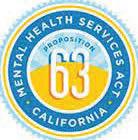


Historic Storms. HISTORIC RESPONSE.
Since the storms arrived on December 30, more than 5,000 PG&E employees worked day and night to safely and quickly restore power. Hundreds more worked behind the scenes to help coordinate relief efforts. In total, our crews restored power to nearly 3 million customers.

But we didn’t do it alone. Crews from across the country and Canada came to help our customers. And first responders—police, fire, and medical—and community partners like the Red Cross, local food banks, 211, and many others worked to support our crews and keep our customers safe. As the days wore on and the storms kept raging, responders didn’t stop until the job was done. We are truly grateful for the sacrifice, tenacity and endurance of all those who worked with us.
We understand how important electricity is to keeping you and your family safe in the winter months, and we will always work tirelessly to restore your power. And now, as communities begin to rebuild, we stand ready again to help you in any way we can.
5,000 PG&E crews worked with mutual aid from 12 other utilities that sent

2,200 people from across the country and Canada to restore power to nearly
3 million customers
Californians showed that teamwork, courage and compassion were stronger than a 100-year storm. Thank you.
He was introduced by Holden as a “partner” in crafting the bill.
Revenue Sharing for College Athletes... “A Culture of Preparedness:” Get Need-to-Know Storm Safety and Insurance Advice
Huma pointed out the difficulties faced by Black athletes and the exploitative nature of some of the NCAA rules, many of which were highlighted in a 2020 study by the National Bureau of Economic Research, which looked at basketball and football. It found that the system funnels funds away from Black students with low-income backgrounds.
Huma was quick to call the NCAA business model illegal using “amateurism” to “strip wealth” from Black athletes.
“The NCAA and its colleges do nothing about the trail of seriously injured, abused and dead college athletes. This unchecked abuse is not an oversight — it’s by design,” said Huma.
Huma’s organization supports the bill, and, in his speech, talked about player safety and fair market value as important parts of helping student athletes. He referred to the bill as a step to ending what he characterizes as “exploitation” by the NCAA.
The bill requires those students who are not receiving “fair market” value to have a graduation fund created for them every year which will apply to tuition — even if they can no longer play. Making graduation a goal for student athletes, the bill’s supporters say, is pivotal because data shows many students are spending long hours training to the detriment of their education or forced to play with serious injuries for fear of losing a scholarship.
Amy LeClaire was a college gymnast and victim of sexual assault at San Jose State in 2016. She and over two dozen other victims settled with the college, according to Jemma Dunn, her attorney.
LeClair was abused by her coach and her trainer, and the college failed to report the abuse, the lawsuit alleged.
Several of the working conditions LeClair endured will also be addressed by the bill. Ensuring athletes can complete medical treatment and providing ways to report abuse without repercussion are both included in the language.
“I have witnessed firsthand the depths and complexities of institutional cover ups. Universities have not earned the privilege of operating unchecked, nor have they earned the benefit of the doubt,” said LeClair. “I entered the Institute knowing the risks of a highlevel sport, but never imagined the dangers of the institution itself.”
Not everyone will be happy if the bill passes. The NCAA has asked the federal government to block many of the Name, Image and Likeness (NIL) laws being passed by states and claims that these types of laws undermine their ability to regulate this billiondollar industry, according to Linda Livingstone, the NCAA’s Board of Governors chair who was quoted in Fortune magazine.
Livingstone, in cases involving NIL disagreements, said, “We already see that state legislators will take action that they believe will give the universities in their states a competitive edge over their neighbors.”
Elisha Guidry is a recent graduate from UCLA and was a student athlete for the Bruins. As a recent graduate, he has a hopeful view on how the bill will affect students.
“I want to thank all student athletes out there past current and future,” said Guidry. “Our hard work and dedication on and off the field has gone unnoticed. This bill is a step in the right direction to improving things for us now and in the future to come.”
Cops Search Black California Teens...
Continued from page 3
RAC), a coalition of over 77,000 public safety workers in more than 950 associations, released its own study, which refutes the RIPA Board’s report.
PORAC’s 2023 annual report, “A Critical Analysis” by Dr. Brian L. Withrow, dated Jan. 2, 2023, states that “California is experiencing a public safety crisis” while “law enforcement departments are understaffed, underfunded, and underappreciated.”
“Unfortunately, California’s Racial and Identity Profiling Advisory Board (RIPA) has pursued an inherently flawed approach to assessing police stop data that
both misrepresents the data itself and misleads the public to believe things that simply are not true,” Withrow said. “Californians deserve appropriate scrutiny of officer behavior, but they also deserve the truth. To do otherwise would only sow further division between law enforcement and the communities they risk their lives every day to serve.”
To date, the traffic stop data made available by the RIPA Board is the nation’s largest and most comprehensive collection effort under which all state and local law enforcement agencies will be required to report to the California Department of Justice by April 1,
Maxim Elramsisy, California Black Media
“A Culture of Preparedness:” Get Need-to-Know Storm Safety and Insurance Advice

Maxim Elramsisy | California
Black Media
At least 20 people lost their lives due to the “Parade of atmospheric rivers” drenching California landscapes. The historic storm system, which has caused flooding, mudslides, levee breaches, heavy snow, hurricane force winds, and even a tornado, began late last year and has continued into the new year.
On Jan. 12, Gov. Gavin Newsom requested an expedited major disaster declaration for California, which was approved by President Biden on Jan. 14, in Merced, Sacramento, and Santa Cruz counties.
On Jan. 18, Santa Barbara, San Luis Obispo and Monterey counties were also approved.
A Major Disaster declaration means damage is beyond the combined capabilities of local and state governments to respond. As a result, affected areas will be eligible for a range of federal assistance programs.
“The big storm event, the big weather system that’s been creating what has been called atmo-
2023. In addition to providing an indepth look into policing in 2021, the Board’s report lists a wide range of recommendations related to policing, with a focus on the impact of pretextual stops, law enforcement interactions with youth, civilian complaint processes, and training on racial and identity profiling.
The RIPA Board insists that the report is consistent with the disparities observed in prior years’ data with respect to perceived race, gender, and disability status.
“California is leading the nation in its effort to collect data on police-citizen interactions and to foster transparency and make
spheric rivers, is coming to an end,” said Diana Crofts-Pelayo, Assistant Director of Crisis Communications and Public Affairs at the California Office of Emergency Services. “It’s not too late to be prepared for the next emergency. It really is incumbent on us all to talk as loved ones, family and friends about emergency plans, should another storm happen. Have an emergency kit read if you need to leave your house quickly. Communicating and checking in with loved ones will help be part of this overall culture of preparedness and resilience.”
Returning Home After a Flood
When returning home following a flood “the best advice is really to avoid flood water,” says Jason Wilken, Career Epidemiology Field Officer at the U.S. Centers for Disease Control (CDC).
“It can contain toilet waste and bad germs. It can have hazardous chemicals, including things like gasoline, and it can contain hidden heavy or sharp objects,” he warned.

Floodwater can also be in contact with downed power lines and floods can also cause the migration of animals. So, there may be living or dead animals in floodwater,” he added. “If you must come in con-
progress towards fair, equitable, effective policing,” said Steven Raphael, Co-Chair of the Board and Professor of Public Policy at UC Berkeley. “Data collected under RIPA provides important information to the public, to legislators, and to law enforcement to guide policy and practice throughout the state.”
For more on RIPA and other criminal justice data, members of the public are encouraged to visit OpenJustice, a California Department of Justice, data-driven public initiative that works to increase access to criminal justice data and support the development of public policy.
tact with floodwater, wear rubber gloves and rubber boots. If you have children, do not allow them to play in or near floodwaters,” said Wilken. “Don’t let them play with toys or anything that flood water has gotten wet until those things can be disinfected.”
Wilken said consuming contaminated food or water can make you very sick. “Other than undamaged cans or metal pouches, you should throw out any fresh or packaged food that was touched by flood water.” The outside of the containers should still be disinfected. He recommends using one tablespoon of bleach into one gallon of water for cleaning surfaces and utensils. Importantly, he notes, “NEVER MIX CLEANERS,” as it may cause dangerous chemical reactions.
If the hard surfaces in your home are wet for over 48 hours, mold may be present. Drying your home and removing items that have been water damaged is your best route for preventing the growth of mold.
Be careful and know the source of the water that you consume. Sealed bottled water can be safe, but if the surface of the bottle has been contaminated, boil it for one minute. If you get municipal tap water, listen to your local authorities regarding safety. If you get your water from a well, get in touch with local environmental health, or your water department for advice on how to test and disinfect your water source.
Navigate California’s Social Safety Net
Go to www.cdss.ca.gov for state disaster assistance and additional resources. Apply for federal help through FEMA Disaster Assistance at DisasterAssistance.gov or call 1(800) 621-3362. To learn more about help, local resources, or for app
“For the over 5 million individuals that are currently participating in Calfresh, [including] those who have had power outages related to these storm events and have lost the food resources that they have purchased, can get those replaced within 10 days of their loss by just contacting their county social service agency,” says Kim Johnson, Director of California Department of Social Services.
A telephone number, “The Hope Line” 1(833) 317-HOPE (4673), was created “for individuals who are impacted to simply navigate this change,” she says.
Seniors facing isolation can
call “The Friendship Line” at 1(888) 670-1360.
Be Prepared. Help The Vulnerable
The importance of timely information cannot be understated. Be aware of your surroundings.
Sign up for free emergency alerts at www.CalAlerts.org, authorities say.
“Anytime there are these types of disasters, there are individuals who are disproportionately impacted by those disasters,” said Vance Taylor, Chief of the Office of Access and Functional Needs at the Office of Emergency Services. “We’re talking about older adults, people with disabilities, people who are economically disadvantaged, or transportation disadvantaged, people with access or functional needs, and so to ensure that our emergency management systems, programs and services are being rolled out in a way that is equitable and accessible to everyone is a top priority,” said Taylor.
Insurance Quick Tips
Comprehensive auto insurance covers damage to your automobile – and “loss of use” coverage could reimburse a rental car if you need one. Home and renters’ insurance covers damage from fallen trees and wind. Mudslides and debris flow caused by landscape scarring from a previous wildfire is also covered by home and renters’ insurance.
Flood insurance is sold separately through the National Flood Insurance Program and takes effect 30 days after purchase in most cases.
Tips for Filing Insurance
Claims:
• Make sure you have a copy of your policy
Contact your insurance agent
Log conversations with your insurance company in a “claims diary,” including who you talked to, what you talked about, what agreements were made
Track all expenses while living away from home (hotel bills, restaurant expenses)
• Take pictures/video of the damages, but don’t start the remediation/cleaning until the adjuster conducts an inspection
• Don’t get scammed. Use licensed contractors For more information contact the Department of Insurance for help at 1(800) 927-4357 or visit www.insurance.ca.gov.
ACTORS WORKSHOP with FLO WILEY
Saturdays, February 4 to March 25 CoBiz Richmond (by BART)

REGISTER NOW!
flowiley@spiritandimage.org / DEADLINE: January 28, 2023
Open
Enrollment
Continued from page 2
“The pandemic took a toll on us in so many ways, including our behavioral and mental health, which are critical to our ability to live happy, healthy and productive lives,” said Jessica Altman, executive director of Covered California. “Getting the right behavioral health care starts with making sure people have health insurance with access to quality providers, and that can be done right now through Covered California’s open enrollment.”
Cameron Nelson is an artist and painter living in San Diego who plans to enroll with Covered California.
“As an independent artist I am the one responsible for finding healthcare since I don’t have a traditional job where it’s provided for me. Many of my friends who make a living off their art don’t have plans because they think it is too expensive to cover on their own. I’ve found the options the state
in California...
provides to be helpful in my situation and I hope that my example can encourage other sole proprietors to do the same.”
The only other way to buy an insurance plan outside of open enrollment is to qualify for special enrollment. This timeframe is called the Special Enrollment Period (SEP). This exception allows you to apply for health insurance
if you’ve had certain qualifying life events, such as losing your job, moving to a new state, getting married or divorced, becoming a widow or widower, aging off your parent’s plan or having a new baby.
You won’t be eligible for special enrollment if you lost your previous health plan because you failed to pay your monthly premiums or if you voluntarily canceled the coverage.
Visit Health for California to get more information on plans that work best for you before the deadline arrives.
A Painful and Still-Present Memory:
Honoring the Lives of Holocaust Victims
Francisco, the Peninsula, Marin, and Sonoma Counties. It holds more than 13,000 books and several thousand documents, photographs, and artifacts in the Tauber Holocaust Library and Archives.
Jaivon Grant, California Black Media
For some, it may be hard to imagine barely escaping alive
from one of the biggest mass genocides in world history, or hearing stories about family members who were the victims of a catastrophe
COMMENTARY: Bullets Not Firecrackers for the Lunar New Year
of that magnitude. But for Jewish Americans living in California that scenario is a painful and present truth that they live with, respectfully acknowledging and memorializing it every year.
International Holocaust Remembrance Day (IHRD), commemorated yearly on Jan. 27, is a memorial day established by the United Nations General Assembly in 2005 to honor victims (and their families) who suffered from the German genocide that lasted more than a decade. According to the United States Holocaust Memorial Museum, the day of commemoration was established for several purposes. Among them are serving as an official date to honor victims of the Nazi regime and promoting Holocaust education worldwide.
For Brandon Brooks, director of California Black Media’s Stop the Hate Project, it is critical for Californians — and all Americans — to recognize and uplift the experiences and perspectives of their neighbors from other ethnic groups. Funded by the California State Library, the Stop the Hate project aims to eradicate hate crimes and hate incidents in the state and promote intercultural understanding and cooperation.
By Emil GuillermoIn Lunar New Year-speak, the rabbit year is believed to portend peace and hope, not fear and dread.

But the sounds of the season aren’t firecrackers. Just bullets.
From Oakland to Half Moon Bay to Monterey Park in Southern California, it’s strange when American mass shootings take on the look of our country’s diversity.
That’s not a good look.
Just take this, unique period — from 10:30 p.m. Saturday, Jan. 21, to Monday night around 6 p.m. Jan. 23. In less than 48 hours, in the great diverse state of California, we saw mass gun violence that has claimed 19 lives.
The situation in Oakland has been somewhat pushed out of the national glare. But on Monday night, Oakland Police say eight people were shot on MacArthur Boulevard. Reports say those who were shot took themselves to local hospitals where one person died.
Shocking, but it almost seems common in America these days. It should never be an afterthought, but it is when two other mass shootings take place in that time period.
The first was Saturday night, when a shooter entered the Star ballroom in Monterey Park,
opened fire and killed 11 people, wounding another nine. The shooter fled to Alhambra to the Lai Lai ballroom looking to do more, but was disarmed by a young man, Brandon Tsay, who is being called a hero.
The suspect fled, but the surprise came when Los Angeles County Sheriff Robert G. Luna announced who they were looking for.
“Our very preliminary description has been described as a male Asian,” Luna said.
A “male Asian?” You were expecting maybe a white supremacist?
Many, in fact, from the start were thinking hate crime since there’s been nearly 12,000 instances of hate transgressions against Asian Americans since the pandemic began.
That’s the type of perp I was expecting. Pardon me for stereotyping racist mass shooters.
I just didn’t expect “male Asian.”
By late Sunday, the suspect was identified as Huu Can Tran, 72.
Tran was found dead of a self-inflicted wound after he was pulled over on a traffic stop on Sunday mid-morning, said LA County Sheriff Robert Luna at a press conference.

And just as everyone was trying to process the grief and shock of Monterey Park, Half Moon Bay happened.
Suspected murderer Chunli Zhao appears to have driven to a Sheriff’s substation to turn himself in when he was called out of his car and wrestled to the ground.
Zhao is being held on suspicion of killing seven people around 2 p.m. Pacific time on Monday in two workplaces — mushroom farms — 30 miles south of San Francisco.
Overall, it leaves us with some staggering math. Seven dead, one wounded in Half Moon Bay.
Eleven dead and 9 wounded in Monterey Park to the south. Add the one death in the Oakland incident, and you have 19 people dead, 17 wounded in three mass shootings in California since Saturday night.
Zhao, 66, now joins the late Monterey Park suspect Tran, 72, onto an ignominious list cre-
ated to accommodate an emerging Asian male stereotype, a different kind of OG — older gunman, suspected mass murderer.
Officials said Zhao is believed to have acted alone, using a semi-automatic weapon deputies found in his car. The Half Moon Bay victims were only identified as a mix of both Chinese and Hispanic farmworkers, who were Zhao’s coworkers.
It’s a part of the AAPI community you don’t often hear about: the Chinese immigrant ag workers in the Bay Area who live on the farms.
It’s also far from the suburban landscape of Monterey Park in Los Angeles County. But you don’t really hear much about them either.
This is part of our functional invisibility. Often, we deal in our own worlds apart from the mainstream. We deal with it, until it’s no longer functional. It wasn’t for Zhao and Tran. Something in their worlds wasn’t right. They turned to a gun for answers.
People notice us now. But it will pass. Until the next time, and the next time because we’ll have more AAPI shooters before any viable policy changes.
And as the shooters become more common, our assimilation into America’s gun narrative will be nearly complete.
AAPI will no longer have just the white supremacists and the anti-Asian haters to fear.
We’ll have more AAPIs like Zhao and Tran to deal with — and not just older men, but younger men and women, too — people who seek to deal with their private matters in a public way through gun culture and violence.
Tran’s saga ended with a self-inflicted wound. Zhou didn’t get that far. But maybe a lesson is to focus a bit more on the welfare and mental health of our people and not just on the control of the gun.
As Tran showed us, the gun was just the means to the ultimate cry for help.
Emil Guillermo is a journalist and commentator. He does a talk show on www.amok.com.
In Jewish communities, Jan. 27 is known as Yom HaShoah. Families and communities will often light Yahrzeit candles — Yahrzeit means anniversary (specifically related to someone’s death) — to honor those who were murdered in the Holocaust. The candle burns for 24 hours, and it is custom to light it at sundown on the day before Yom HaShoah. Occasionally, electric Yahrzeit candles are used as a substitute and are plugged into a wall in places like hospitals, for safety reasons.
In Los Angeles, at the Holocaust Museum LA, visitors can see firsthand artifacts that were personal items from survivors and other memorabilia. This museum, founded in 1961, is the oldest survivor-founded Holocaust exhibit in the United States that is solely focused on the impact of the mass genocide. The experience is free for students, and the museum offers tours, educational programs, and conversations with survivors meant to inspire critical thinking and show the Holocaust’s current social relevance.
Morgan Blum Schneider, Director of the Jewish Family and Children’s Services (JFCS) Holocaust Center, says that she is dedicated to raising social awareness about Jewish history and inspiring social responsibility.

“The JFCS Holocaust Center was founded by Holocaust survivors through perseverance and determination to fight antisemitism. We continue to share their testimony with thousands of students each year,” said Schneider. “This week, in honor of International Holocaust Remembrance Day and every week throughout the year, the JFCS Holocaust Center works in partnership with CA teachers to bring lessons of the Holocaust and genocide into classrooms throughout California to inspire social responsibility and moral courage in today’s youth.”
The JFCS Holocaust Center is a program of Jewish Family and Children’s Services of San
“For Black Americans, the way we identify with the horror stories of the Holocaust is immediate and deeply sympathetic. It is a recognition based, in part, on our own collective memory of slavery, exclusion and suffering because of who we are — not what we did — as a people,” he says. “The only way we, Americans from all backgrounds, can begin to do something about the division, misunderstanding and normalization of racial and ethnic hatred that we see trying to flourish in our society is to fight it by learning; push back on it by listening. Get to know about each other’s histories, celebrate each other’s traditions, embrace the things that unite us as Americans and take a hard, uncompromising stance against hatred in any form and the violence it triggers.”
Notably, the dedication to honoring IHRD extends incredibly far beyond California, where there are an estimated 1.19 million people of Jewish descent (about 3% of the state’s population), based on U.S. Census numbers compiled by World Population Review.
According to the Holocaust Encyclopedia, 39 countries participated in IHRD commemorating ceremonies in 2015. Many of those countries hosted lectures, showed films, or lit candles while reading names of the victims. Additionally, many participating countries established their own remembrance days that linked to events caused by the Holocaust.
The United Nations Educational, Scientific and Cultural Organization (UNESCO) — established in 1945 to promote international cooperation through education, science, and culture — has also fought to counter antisemitism and other forms of group-targeted violence.
“The Holocaust profoundly affected countries in which Nazi crimes were perpetrated, with universal implications and consequences in many other parts of the world,” reads the UNESCO site. “As genocide and atrocity crimes keep occurring across several regions, and as we are witnessing a global rise of antisemitism and hate speech, [sharing a collective responsibility] has never been so relevant.”
This California Black Media feature was supported in whole or in part by funding provided by the State of California, administered by the California State Library.
Popular Chief LeRonne Armstrong...
OPD deficiencies “revealed failures that call into question the integrity of (OPD’s) internal investigation processes.”
Many observers and police accountability activists are saying that the present scandal and subsequent community uproar over Chief Armstrong is best resolved by removing police misconduct investigations from OPD and instead turning the cases over to an independent civilian body.
Defending the department’s internal investigation, Armstrong said the investigation that was conducted was “consistent with the findings that were presented to me.”
“To work and get to this point and have it taken away from you hurts. It doesn’t just hurt me, it hurts my community because every day I come into this job to try to make Oakland better,” he said. Prior to this incident, Armstrong has been widely praised for helping make significant reforms at OPD and paving the way for an end to federal court intervention.
Armstrong said the sergeant involved in the case, who was identified in the media as Michael Chung, was placed on leave following the shooting incident, but that the chief was unable to review the case because Warshaw had taken over the investigation.
Sergeant Chung, one of Oak-
land’s most highly paid employees, received total pay and benefits of $492,779.77 in 2021, including regular pay of $160,828.84 and overtime pay of $276,959.38.
Armstrong, who has deep ties in the Oakland community, was born and raised in West Oakland, California, and was a graduate of McClymond’s High School. He joined the OPD as a police officer in 1999, after spending four years with the Alameda County Probation Department. He has a bachelor’s and master’s degree.
In a press statement, Mayor Sheng Thao said that placing Armstrong on paid administrative leave was not punitive but was a standard procedure when investigating possible officer wrongdoing.
“We must do what we need to do to get out of that oversight,” she said, explaining that she wants to show the public and the court monitor that there will be no favoritism. A rookie officer or the top officer will face the same investigative process.
“I want to make sure that everyone understands that, under our administration, that we take these findings seriously and it’s important that we look at taking the corrective action that is needed to make sure that we stay on track to make sure that we get out of the federal oversight,” she said.
“My belief is that, by holding ourselves accountable, we can be safer and a more just city,” Mayor
Thao said.
At a federal court hearing Tuesday, Judge William Orrick, not addressing the criticisms of Warshaw’s role, said he was “profoundly disappointed” by the findings of the outside report conducted by attorneys hired by the City of Oakland, which revealed “significant cultural problems” that still exist after 20 years of court oversight.
The oversight began as a result of the negotiated resolution to a civil rights lawsuit in the Riders scandal in which plaintiffs alleged that four veteran officers, known as the ‘Riders,’ planted evidence and beat residents, while OPD turned a blind eye to the police misconduct.
“This is the third time since I’ve been overseeing the implementation of the (settlement) that the city has seemed to come close to full compliance,” Judge Orrick said, “only to have a serious episode arise that exposes rot within the department.”
Mayor Sheng Thao said she takes this case seriously, not a minor fender bender as some have dismissed it, and that said those involved will be “disciplined appropriately.”
“This particular misconduct is serious because it provides fertile ground for other misconduct to thrive,” she said at the hearing. “I will not tolerate toxic subcultures that try to demonize or deter officers who do the right thing.”
OPD Chief Armstrong Placed on Leave...
Continued from page 1
a representative of plaintiffs’ interests in the negotiated settlement agreement in the civil rights case that the federal court has monitored for the past 20 years.
Burris told the Oakland Post
lice department need this process to play out. Let the process play out, and (then the chief can) come back vindicated.”
She said the public still does not know the extent of the police misconduct and cover-up. “We’ve only seen 16 pages of the report,” she said.
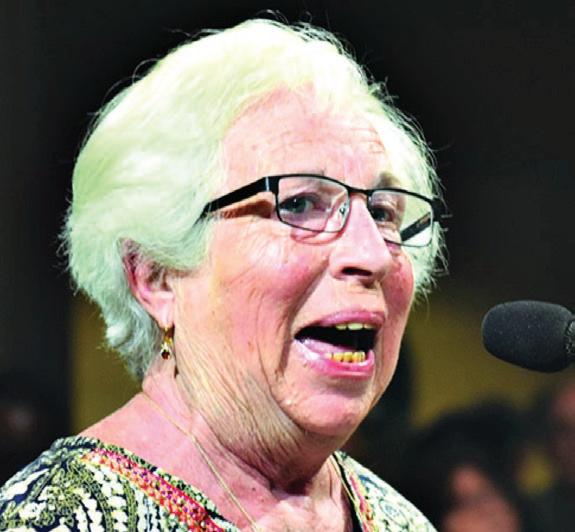
The problem, said Brooks, is that some in OPD want to build support for ending public oversight of the OPD, even though the department has not completed all the reforms that the federal court is requiring.
that he thinks Armstrong should be reinstated. “I thought that him being put on administrative leave was not supported by evidence. The chief has done an excellent job. It’s a terrible thing to do. It affects his reputation. Once there is a due process hearing, he should prevail.”
However, Burris did not support the criticisms that were raised of Warshaw. “I don’t agree with the trashing of the monitor, the allegations of a monetary bias. I’ve known the monitor for 13 years, and I don’t always agree with him. I talk to the police chief and the monitor, and we don’t always agree with each other.”
Cat Brooks, community activ-
DA Pamela Price Appoints
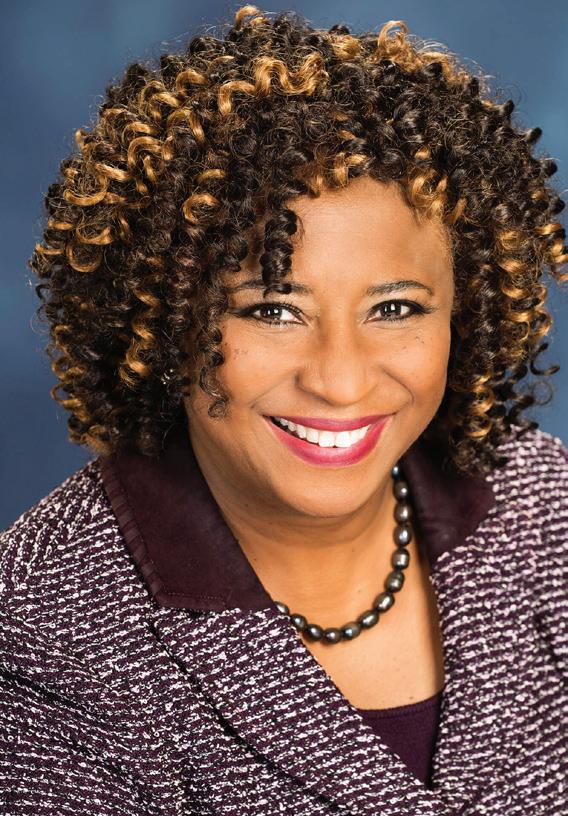
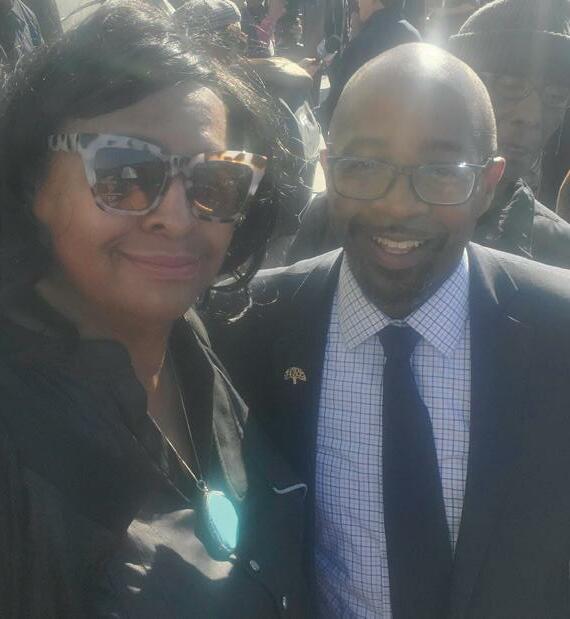
Karla EliasFlores to Head Family Justice Center
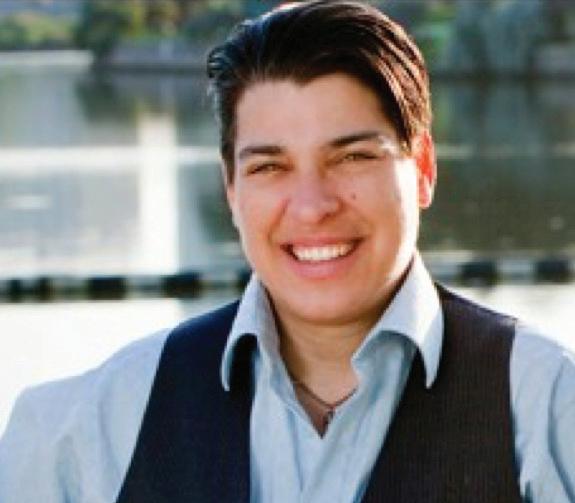
services, it resonated.” She called his efforts “unifying and uplifting because he spoke at the Pastors of Oakland Association, which our AAPI community also attended. At that meeting, both Black and AAPI officers spoke. He treats all cultures and ethnicities equally; you just needed to be a citizen of Oakland, and he had your back.”
Chief Armstrong empowered the “Oakland Community Chaplain Program,” which Scott also heads, a program made up of community members, clergy and pro-
city attorney launch a full investigation of Monitor Warshaw.”
Chuck Baker, chairman of the 100 Black Men of the Bay Area supported Chief Armstrong by citing his record. According to Baker, crime and homicides are down by 10%, shootings reduced by 25%, and 1400 guns have been removed from the streets of Oakland.
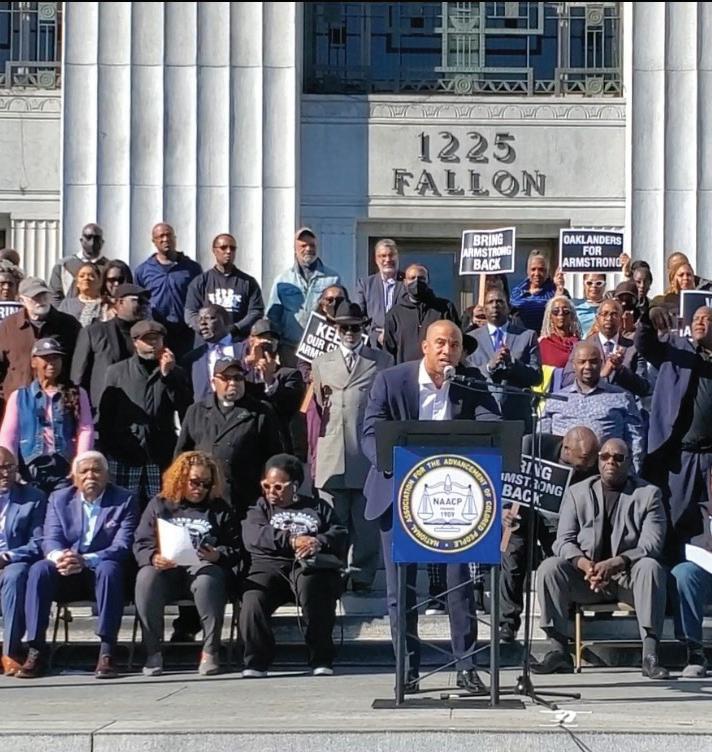
“Brother LeRonne is one of us,” he said. “He embodies character, wisdom and strength. Not one African male has been shot by police and he has the highest number of sustained cases in his first year than in the previous 5 years in Oakland. So, how are we investigating people who are investigating?”
Alameda County District Attorney Pamela Y. Price has appointed Karla Elias-Flores as the interim executive director of the Alameda County Family Justice Center (ACFJC) Grant. EliasFlores has worked at the ACFJC for more than 15 years, first as a victim advocate with ACFJC partner, the Family Violence Law Center and most recently serving as the ACFJC Associate Director, South County coordinator.
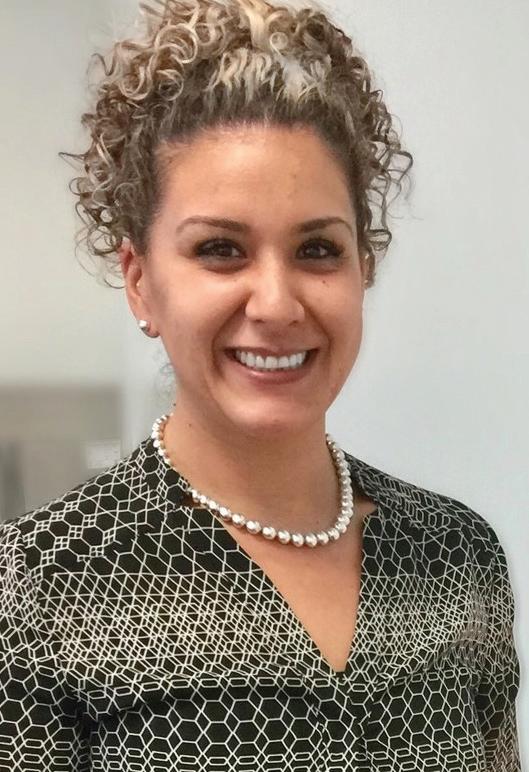
Surrounded by support and handheld signs stating, “Chief Armstrong Matters,” “Oaklanders for Chief Armstrong,” and “Bring Armstrong Back,” Armstrong addressed the crowd chanting support.
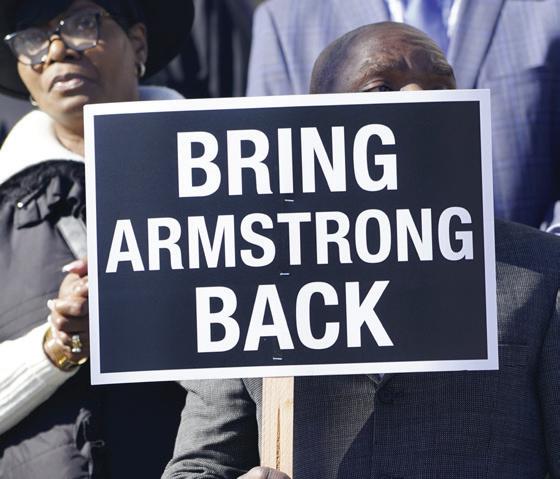
ist, journalist, and actor, told the Post she understands that Armstrong has a lot of friends, people grew up with him and many people know him. “But that’s not the accountability metric. No, there’s a process in place, and the process should proceed.”
“People in West Oakland, East Oakland and other communities at the boot of the violence of this po-
“Something that was improper has happened. There is something there, and there needs to be an investigation. Organizing the community to interrupt the legal process is not the proper process,” said Brooks.
Councilmember Rebecca Ka-
illegal gun dealers and armed robbery rings. If investigations were not under OPD, this current case that the court is discussing would not have happened,” said Councilmember Kaplan.
Rashidah Grinage, a member
Elias-Flores is a certified domestic violence counselor and certified rape crisis counselor in California. “The mission of the Alameda County Family Justice Center is ensuring access to justice: you can’t have healing, without first finding justice,” said DA Price. “I’m excited to lead the way forward for survivors to obtain justice.”
fessionals that minister to families impacted by violence.
“This is our friend, our chief, our native son.”
“As the President of the Pastors of Oakland and the Director of the Oakland Community Chaplain Program I am calling on the mayor to bring back our Chief.” Bishop Bob Jackson, a former president of the Pastors of Oakland reiterated the position of Pastor Phyllis Scott’s statement. He added that Armstrong should “be exonerated and his position as chief be reinstated and we want it done now. We demand that the mayor and
“It took a lot for me to get to this point, and to have it taken away hurts,” said Chief Lerone Armstrong. “Every day I come to this job to make Oakland better, Oakland safer.” Armstrong thanked his supporters. “This is Oakland! I appreciate your support. I’m from West Oakland. I won’t pick a fight, but I won’t run from one.”
plan says this case once again proves that investigating officers accused of misconduct should not be left OPD.
“(This) further proves that investigations of police misconduct should be handled independently, and by civilians: OPD should not be in charge of investigating themselves,” she said.
“The Oakland City Council previously directed the City Administrator to move investigations from OPD’s Internal Affairs Division to the Community Police Review Agency,” Kaplan continued.
“Implementation of this policy must be carried out swiftly to ensure transparency and accountability, help build public trust, and safety to all Oaklanders. No department should be in charge of investigating their own allegations of misconduct.
“And police time should instead be devoted to shutting down
of the Oakland Coalition for Police Accountability and a police reform activist for decades, spoke to the Oakland Post, representing herself as an individual.
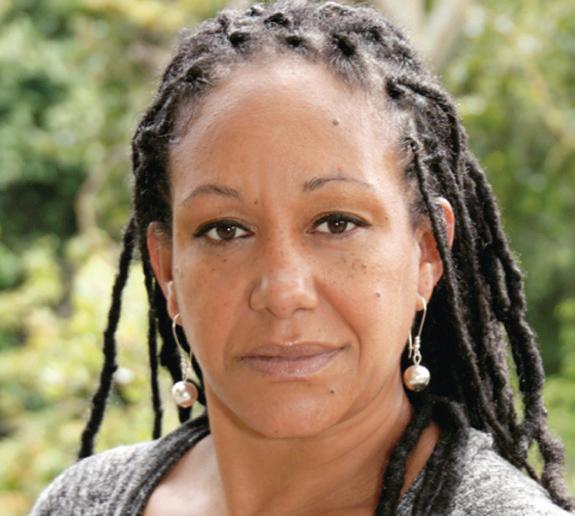
“I don’t have any information about the degree to which the chief is culpable. (However), my understanding is that basically being put on administrative leave is routine when someone is being investigated. It’s pro forma. I think the whole thing should be allowed to play out. The investigation is continuing.”
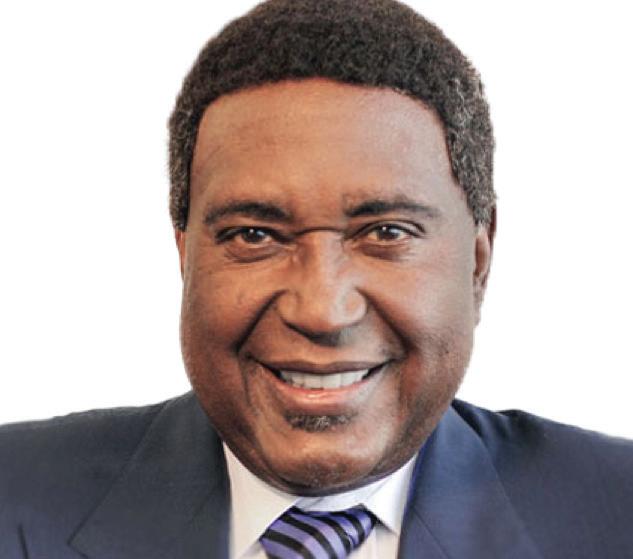
However, Grinage said Armstrong made a mistake to hire Sam Singer’s public relations firm, bringing him in and launching an attack on federal monitor Robert Warshaw. “Singer’s a really bad choice,” she said.
Grinage said that when Warshaw was first hired, he was the choice of the Oakland Police Officers Association (OPOA). She explained that the mayor cannot fire Warshaw. “He’s responsible to the federal judge. He’s not responsible to anybody else.”
Speaking as an individual, Cathy Leonard, who is a member of the Coalition for Police Accountability, said she supports the chief and thinks he may have been treated unfairly.
However, she added that she does understand the need to allow the process to play out and that placing the chief on administrative leave allows the process to go ahead with no possible allegations that he is obstructing the investigation.
OP-ED: Oakland Police Commission Should Step Up and Do More
Elias-Flores said, “I am so grateful to DA Price for this opportunity to take ACFJC in a new, bold forward trajectory…The ACFJC crew is my family, and I’m so ready to lead us into work that will make a difference for not only domestic violence survivors, but Alameda County as a whole.”
The DA’s Office has also been awarded a $100,000 grant, by the California Partnership to End Domestic Violence, which will help domestic violence survivors utilize restraining orders against abusers who should not be in possession of firearms.
“It is imperative that members of our community, especially survivors of domestic violence, know that we have options to reduce risks of harm when seeking safety,” said DA Price, a survivor of domestic violence herself. “This grant will increase awareness of and access to tools that already exist to help limit access to firearms and prevent serious harm and fatalities in our community.” The ACFJC is a one-stop shop for a variety of services under one roof, including services to survivors of domestic violence, sexual assault, human trafficking, child and elder abuse, dependent adult abuse, commercially sexually exploited minors, and stalking. For more on the ACFJC, visit their website: ACFJC.org
By The Coalition for Police Accountability
In 2016 and 2020, over 80% of Oakland residents voted in a threeentity system of oversight and investigation of the Oakland Police Department. The system was and is centered in the Oakland Police Commission, the Community Police Review Agency (CPRA), and the Office of Inspector General. But with initial Internal Affairs investigations continuing to exist within the police department rather than with CPRA, the latest incident proves that the status quo is still not working. It remains too easy to overlook the misdeeds of favored officers while rank and file members complain of disparate treatment. Last week’s action temporarily sidelining a popular chief, like home grown LeRonne Armstrong, brought that problem into focus again. Whether or not the chief gave due diligence to the case is what remains in question while additional investigations are carried out.
Given that the paramount goal in many politicians’ minds is the need to end federal oversight and provide stable leadership to the city’s police department, the city must prove that it can trust that oversight to the independent civilian bodies that citizens voted for or that oversight will have to remain with the court.
When discrepancies arose around the actions of a very highly paid officer, the former mayor felt
it necessary to hire an outside investigator to double check if correct procedure was followed. Once that investigation was completed, it became obvious that more information needed to be obtained.
Lastly, the events of this last week cast light on the promise of the Oakland Police Commission (OPC) and causes us to reaffirm the need for its members to step up. There are multiple questions about the OPC’s role in the run up to this latest crisis: did OPD notify the OPC about the pending investigation and when did that happen? Did the language of that notice conceal the seriousness of the matter? If the notification was sent solely to the OPC’s chair, did she share it with her colleagues, the Inspector General, and/or the Director of the CPRA as would have been necessary to conduct a thorough independent investigation?
It is time for Oaklanders who are willing to serve on this important commission, to step up to their weighty task. Independent citizens who comprise this body cannot allow themselves to be limited by community division, rumor or disharmony within the Commission and should instead focus on the mission of holding the police department accountable to the community it serves.
For further information contact: Cathy Leonard, President and Board Chair, Coalition for Police Accountability, oaklandcpainfor@gmail.com
